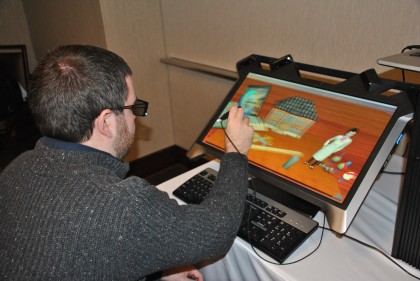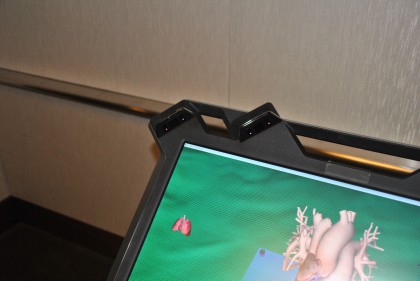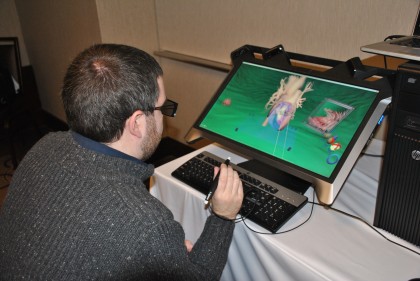Early Verdict
HP's ambitious VR display could make waves in enterprise, but only after it improves in some fundamental ways
Pros
- +
Immersive experience
- +
Fluid movement
- +
Innovative aspirations
Cons
- -
Price
- -
Pedestrian stylus
- -
Simplistic environments
Why you can trust TechRadar
Let's be honest: virtual reality (VR) is a nascent market for consumers and nearly non-existent for businesses. VR technology is led by Oculus's Rift Crescent Bay, which still isn't ready for mass consumption, but offers users an immersive environment with high definition imagery and the best movement tracking on the market.
Sony's Morpheus headset should be ready as a PS4 connector this year, but Sony won't commit to a release date, and even if they did, the Morpheus user experience isn't as visually stimulating as Rift Crescent Bay's, and movement tracking is incredibly flawed.
Samsung Gear VR ($249, £157, AU$285) is the most complete VR device on the market, but it only works with the Samsung Galaxy Note 4 and is uncomfortable to wear.
With so many possibilities available for consumers and enterprises to make use of VR technology, it's a shame there aren't more devices available. In comes HP…

The HP Zvr Virtual Reality Display (pricing TBD) is a desktop monitor that, when paired with 3D glasses, can provide real-time virtual experiences. Built with four cameras that connect with sensors built into complementary 3D glasses and a stylus pen, the 23.6-inch full HD, stereoscopic monitor tracks your head and hand movements so you can manipulate on-screen content.
Users can rotate, navigate and zoom in and out of every detail of on-screen content by using the stylus in concert with head movements. For example: if you're staring at a medieval castle on your desktop, you could go around to the side of the walls, you could open the door and enter or lift the castle and place it in a different position, among many other possibilities.

Specifically designed for architectural, computer-aided design, education, and scientific content, the Zvr display makes teaching, practicing and demoing more realistic than traditional 2D displays. HP says it envisions students learning how to dissect frogs on the machine without having to actually take a scalpel to poor Kermit.

During the middle of 2015 HP says you will be able to project your 3D models to a 2D screen for easy team collaboration. So when the aforementioned student moves the virtual frog's heart and kidneys (in his/her 3D virtual environment), the rest of the class will be able to watch the dissection in standard 2D.
Techradar's coverage of the future of tech at CES 2015 LIVE is brought to you courtesy of Currys PC World. View Currys' range of Smart technology here and computing here
What is a hands on review?
Hands on reviews' are a journalist's first impressions of a piece of kit based on spending some time with it. It may be just a few moments, or a few hours. The important thing is we have been able to play with it ourselves and can give you some sense of what it's like to use, even if it's only an embryonic view. For more information, see TechRadar's Reviews Guarantee.
